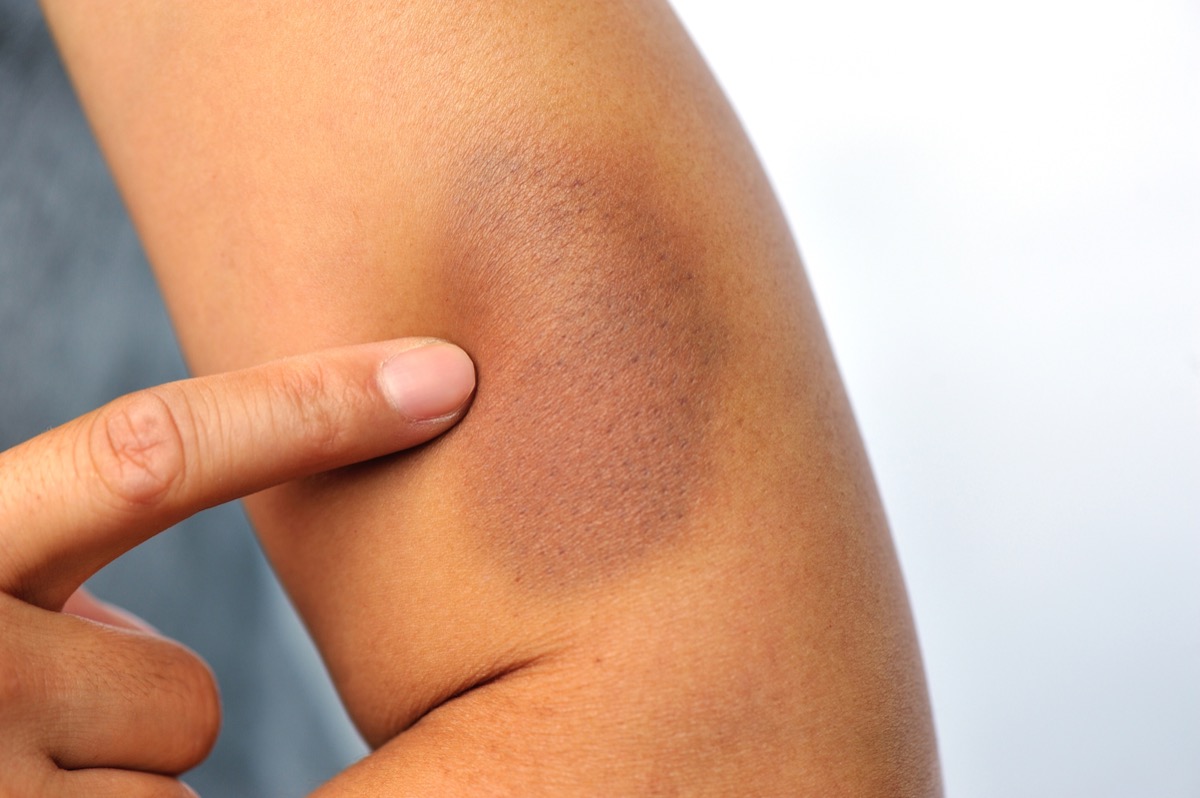Keep reading to learn about the eight vaccine side effects the CDC wants you to pay attention to if you got the Johnson & Johnson vaccine recently. And for more recent vaccine side effect news, check out Pfizer Caused This Reaction in Half of Recipients, New Study Says. As the CDC and FDA learn more about these rare blood clots—which were found up to two weeks after the shot and in women between the ages of 18 and 48—the agencies are urging people to recognize any serious side effects that might otherwise be overlooked. For example, one symptom that shouldn’t be ignored is a severe headache or migraine, the CDC says. While headaches are an expected vaccine side effect, if they’re severe, they can be a sign of a blood clot in the brain, WebMD points out. And for more post-vaccine advice, beware that Doing This After Your Vaccine Can Make Side Effects Worse, Doctors Say. While muscle aches and pains tend to come with the COVID vaccine, a bad backache is another vaccine side effect that could be linked to blood clots, the CDC notes. According to Healthily, chest or upper back pain (a sharp or stabbing pain that may get worse when breathing in) could be a sign of a pulmonary embolism, which is a blood clot in your lungs. Despite COVID behind primarily a respiratory disease, the virus has caused specific neurological symptoms in many patients. And now, the CDC is warning that the Johnson & Johnson vaccine could also provoke new neurological side effects. Neurological symptoms could range from loss of smell or taste, to muscle weakness, to tingling or numbness in the body’s extremities, according to Harvard Health Publishing.ae0fcc31ae342fd3a1346ebb1f342fcb And for more up-to-date vaccine news delivered straight to your inbox, sign up for our daily newsletter. You could have severe abdominal pain for a wide range of reasons, like a stomach virus, constipation, or food poisoning. But the CDC is warning anyone with this symptom after the Johnson & Johnson vaccine to seek medical attention as it could be a sign of a blood clot. And for more facts about this rare reaction, learn about The One Thing People Who Get Blood Clots After the Vaccine Have in Common. Difficulty breathing or shortness of breath must also not be ignored, especially if the vaccine side effect arises within three weeks after your Johnson & Johnson jab, the CDC says. Shortness of breath is not only a symptom of COVID itself, but it’s also one of the vaccine side effects that could be an early sign of a blood clot, according to UChicago Medicine. The CDC is warning that leg pain or swelling is cause for concern after getting the Johnson & Johnson shot. Deep vein thrombosis, a blood clot that occurs in the leg, likely is accompanied with leg pain or swelling, but it’s also possible to be asymptomatic, according to WebMD. Additionally, swelling could be seen where the blood clot has formed. And for more concerning vaccine reactions, check out If 1 of These 3 Body Parts Starts Swelling Up After Your Vaccine, Call a Doctor. Tiny red spots on your skin, also known as petechiae, are another reason to contact your health provider after getting vaccinated with the Johnson & Johnson shot, the CDC says. The small round spots show up on the skin as a result of bleeding and can appear red, purple, or brown, Mayo Clinic explains. Lastly, if you’ve noticed an unusual or unexplainable bruise, the CDC says you shouldn’t hesitate to call your doctor. Bruise-like discoloration, which is likely to be red, could be spotted on the affected body part due to a blood clot, according to Prevention. And if you’re curious as to why some people react differently post-vaccination, This Is Why Half of People Have Stronger Vaccine Side Effects, CDC Says.







